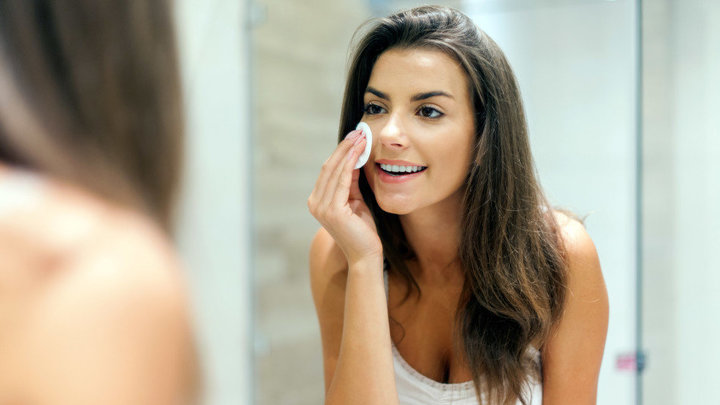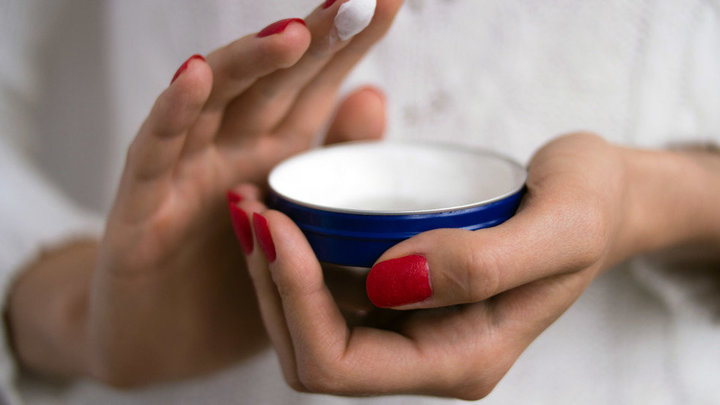Men will no longer require a GP’s prescription to obtain the impotence drug, regulators have decided.
Monthly Archives: November 2017
Teenage brains ‘not wired for high stakes’
Developing brain circuits shape how adolescents approach their goals, say US psychologists.
Health24.com | Etiquette mistakes we make at gym
Working out at your local gym has many benefits: You have a great variety of classes and equipment at your disposal.
But chances are there are things that annoy you and others gym users. You yourself could even be guilty of breaking some of these gym rules:
1. Not putting away the equipment
Ask anyone who regularly works out in the free-weight section what their biggest annoyance is and it would undoubtedly be weights that aren’t put back where they belong.
Don’t be the person who leaves a set of dumbbells on the floor. If you used them, put them back where you found them. The same applies to Swiss balls, yoga mats and steps.
2. Not wiping the equipment
We’ve all spotted the person who sweats buckets on the spinning bike and nonchalantly walks away without even wiping off the seat.
Don’t be that person. Always wipe down your equipment, including treadmill handles and weights.
3. Hogging the equipment
We can see you! You’re occupying the last open bench, but instead of working out, you’re checking your phone for messages.
4. Being stuck to your phone
When using your phone, please keep the people around you in mind. You could be distracting or annoying them. A lot of us use our phones for fitness apps or music, but if you have your phone with you, be mindful of how you use it. Don’t have long or loud conversations! Sending a text message or checking your phone during an exercise class is extremely disrespectful towards the instructor. Also, walking around in the gym, head down, makes it easier for you to bump into people.
5. Overdoing the perfume
Don’t go to town with the perfume or deodorant at the gym, especially in an enclosed area like your spinning class. People might find it overpowering. And you’re going to sweat anyway, so why waste that expensive perfume.
6. Making small talk
There’s nothing wrong with a polite smile and a chat. But if you give unsolicited advice to strangers and interrupt people’s workout, you’re being annoying. The only time to speak up and interfere is when you see someone about to injure themselves.
7. Coming to the gym when you’re ill
Don’t be a hero! Not only do you risk getting sicker, but gyms are breeding grounds for bacteria and you can easily spread your germs around, contaminating those around you.
8. Train in front of the equipment racks
Space might be limited, but don’t make things worse by blocking off access to the weight rack or yoga mats. Be considerate and move to another spot.
This article is provided through a sponsorship from Pfizer in the interests of continuous medical education. Notwithstanding Pfizer’s sponsorship of this publication, neither Pfizer nor its subsidiary or affiliated companies shall be liable for any damages, claims, liabilities, costs or obligations arising from the misuse of the information provided in this publication. Readers are advised to consult their health care practitioner for specific information on personal health matters as this is not the intention or purpose of the publication. Specific medical advice or recommendations on the clinical management of patients will not be provided by Pfizer. In this regard Pfizer does not support the use of products for off label indications, nor dosing which falls outside the approved label recommendations and readers must refer to the Package Insert of any product for full prescribing guidelines.

Health24.com | What happens to your body when you stop exercising?
Taking a short break from exercising is ok. But when that week-long break becomes two and then three and before you know it, it’s been six months since your last workout… your body and health are in trouble.
Here’s what happens to your body when you stop exercising.
1. Your muscles
You’ll probably notice a decrease in muscle mass, which can happen in as quickly as two weeks. Your bone density, flexibility and overall blood flow also decreases.
When the muscle fibres realise they don’t need to store any more energy (because you’re not using it), they store less glycogen, which results in atrophy, or the shrinking of muscle fibres.
2. Your aerobic system and endurance
“Aerobic and endurance fitness reduce a lot faster than muscle mass – it’s the performance factor that is reduced the fastest,” Scott Weiss, a New York-based exercise physiologist and trainer, told Cassie Shortsleeve at Men’s Fitness.
He says that the amount of blood that the heart pumps to the body reduces, heart rate increases, cardiac output reduces and your VO2 max (that’s the maximum volume of oxygen your body can use) decreases by about 1% per day.
“You begin to lose endurance capability as well as the ability to perform at higher intensities,” Tom Holland, an exercise physiologist, adds in the same article.
3. Your brain
Exercise helps get oxygen to your brain, which can affect your health. Research published in the Frontier in Aging Neuroscience journal looked at endurance runners and the effect skipping exercise had on their brains.
The runners took a 10-day break from exercise – MRIs showed a reduction of blood flow to the hippocampus (the area in your brain associated with memory and emotion). The runners didn’t show any cognitive changes during this period, but the researchers pointed out that more long-term studies need to be done.
4. Your sleep
Exercise helps with good sleep. During your deep REM cycles, your body produces hormones that help repair muscle tissue damaged through exercise.
“A lack of exercise will lead to higher levels of energy in the body and reduce the need for deep sleep, which could lead to restless or insufficient sleep,” Pete McCall, an expert exercise physiologist at the American Council on Exercise, told Cassie Shortsleeve at Men’s Fitness.
5. Your mood
Exercising triggers neurotransmitters (endorphins, serotonin, dopamine), which play a role in mood control. Endorphins make you feel good, which is why you often feel better after exercising.
A 2012 study in the Neuroscience journal says that exercise is a long-term investment when it comes to increased productivity and happiness from day to day.
“Those who had exercised during the preceding month but not on the day of testing generally did better on the memory test than those who had been sedentary, but did not perform nearly as well as those who had worked out that morning,” the authors said.
When it’s ok to skip a workout
Sometimes your body needs a rest to recover. Here are times when it’s ok to slack off on exercising:
- You’re sick (particularly if you have a fever or symptoms that are affecting your chest
- You’ve injured yourself
- You’re absolutely exhausted
- You over did your previous workout and can barely walk
Image credit: iStock
NEXT ON HEALTH24X

Health24.com | Why doctors shouldn’t keep bad news from their patients
Many doctors, wishing to soften the blow, tend to be reluctant to deliver bad news to their patients.
Studies have shown that good communication skill in a doctor improve patient’s compliance and overall satisfaction.
Large benefits
Telling cancer patients the truth about their chances of survival does not harm a physician’s relationship with those people. It could even make it better, according to a new study.
“We hope this information will reassure clinicians about any negative impacts of these discussions on their relationships with patients,” said study lead author Joshua Fenton.
“Discussing prognosis doesn’t undermine trust – and informing patients may have large benefits in terms of future quality of life,” added Fenton. He is a professor of family and community medicine at the University of California, Davis.
The study included 238 adults with advanced cancer. The patients received bad news about their disease progression from oncologists in New York state and California.
The study was published in the Journal of Clinical Oncology.
Lower quality of life
Interviews with the patients showed that hearing the poor prognosis did not harm their relationship with their oncologist one week after receiving the news. And it actually improved the relationship three months later, the researchers said.
The findings contradict two previous studies that concluded that such discussions can increase patients’ depression and disrupt their relationship with their doctor.
Fenton noted that many oncologists spend little time talking with patients about prognosis or end-of-life options such as palliative care and hospice. That can lead to more hospital care, lower quality of life and even shorter survival, plus more difficulties for caregivers.
“Prognosis discussions don’t happen early and often. As a result, it’s been clearly documented that many patients often completely misunderstand their prognosis, so treatment decisions made near the end of life might not be totally aligned with the patients’ and caregivers’ priorities,” Fenton said in a university news release.
Image credit: iStock

7 Things You Need To Know About GMO Salmon
[brightcove:5637998331001 default]
It’s taken nearly 20 years but AquAdvantage salmon will soon be served in restaurants and appearing at your local fish counter. AquAdvantage is a man-made breed of salmon that’s part Atlantic salmon and part Chinook salmon with a few genes from other fish thrown in that rev up the animal’s growth processes so they’re active most of the year, as opposed to only part of the year. With these changes, AquaAdvantage’s developer, AquaBounty Technologies, says the salmon grow at twice the rate of farm-raised fish.
The approval by FDA is controversial and contested. Here’s what you need to know for now.
Is the genetically modified salmon safe to eat?
The Food and Drug Administration says it “rigorously evaluated extensive data submitted by the manufacturer, AquaBounty Technologies, and other peer-reviewed data…” and determined that it “is safe to eat by humans and animals.”
Most studies on animals that are fed genetically modified foods don’t show serious health effects, though there are a few that hint at potential harm to organs like the kidneys, liver and heart, as well as increased risk of cancers and early death in these animals.
Will I know which salmon is genetically modified and which are not?
Not necessarily. There is no regulation requiring that AquaAdvantage fish be labeled as being genetically altered fish. Any labeling would be voluntarily by the companies’. The FDA issued two recommendations asking manufacturers to voluntarily label their products, along with guidance about how to note the genetic changes.
Some groups are calling for mandatory labeling. Scott Faber, executive director of a campaign called Just Label It said this in a statement: “The decision to approve GMO salmon without a mandatory disclosure is yet another example of how FDA’s outdated policy keeps consumers in the dark.”
Is it the first approved GMO animal approved for sale in the United States?
Yes. But up to 80% of the processed foods sold in the U.S. contain GMOs, mostly from plant crops. Corn, soy, potato and even some apple crops are genetically engineered to either produce more or to resist insects and drought. (See here for a chart of these crops.)
Why are some people against GMOs?
There are three major concerns about changing genes in wild plants or animals. First, the alterations could change the plant or animal in ways that could be harmful for people who eat them. The changes could also harm the plant or animal and make them less fit to survive. Finally, on a broader level, introducing new hybrid species could alter the environment in unpredictable and potentially worrisome ways.
In the salmon’s case, if the genetically altered fish were to make its way into rivers and oceans, it could outcompete the wild salmon, which is smaller, for food and breeding grounds.
What if the GMO salmon gets into the wild somehow?
For now, AquaBounty says that’s unlikely to happen since it plans to grow AquAdvantage in land-based tanks. The company will also use only female fish that are sterile so breeding in the wild is also unlikely.
But some environmentalists point out to NPR that the company’s egg production facility, on Prince Edward Island, is near an estuary that feeds into the ocean and that the fish will be allowed to mature in a location in Panama that is located near a river, making escape a remote but nevertheless real possibility.
Will changing the genes harm the fish?
The data isn’t clear on this yet. While AquaBounty’s president once told Reuters that AquAdvantage is “an Atlantic salmon in every measurable way,” studies by researchers who have compared genetically modified salmon to their wild counterparts have shown that the fish behave differently. The genetically altered fish tend to eat more to support their growth-promoting genes, and prefer spending time near the surface of the water alone, as opposed to swimming in groups. They also show some reduced immune functions.
Where will the genetically modified salmon be sold?
AquaBounty says it may take as long as a year to raise enough fish to supply supermarkets. But certain retailers, including Whole Foods, Trader Joe’s and Aldi, have said in the past that they will not sell the genetically modified fish.
This article originally appeared on Time.com.
Scarlet fever cases hit 50-year high in England
Experts are unable to explain why the contagious disease is on the increase in England.
6 Nighttime Habits That Make You Look Older
Sleeping This Way on These Types of Sheets
Why it’s making you look older: Sleeping on your stomach or side can lead to wrinkles, says Lauren Ploch, MD, an Augusta, Georgia-based board-certified dermatologist and Fellow of the American Academy of Dermatology, which is why she and pretty much any dermatologist will tell you it’s best to sleep on your back. If you’re a stomach/side sleeper with cotton or flannel pillowcases though, you could be making matters even worse, as those two fabrics tend to cling and pull on the skin, says Rachel Nazarian, MD, assistant clinical professor of dermatology at Mount Sinai Hospital in New York.
The fix: Becoming a back sleeper isn’t easy; plus, you can’t control whether you move and turn over in your sleep. A do-able first move is to switch to silk or satin pillowcases.

Using a Gentle Cleanser to Remove Your Makeup
Why it’s making you look older: Thanks to today’s long-wear, budge-proof makeup formulas, “which require more than water and a gentle cleanser to remove,” says Nazarian, you’re probably going to bed with some makeup still on your face. That can lead to clogged pores, dull skin and accelerated skin aging, says Nazarian.
The fix: If you use long-lasting makeup formulas, start your cleansing process with a makeup-removing wipe or cloth (which will have ingredients that break down long-wear formulas better than a regular cleanser can. Look for ones that say “makeup-removing” on the packaging); then use your gentle cleanser to catch any traces the wipe left behind. The two-step combination is much more likely to get all of your makeup off before you hit the hay.

Turning the Thermostat Up to Toasty
Why it’s making you look older: You know that heat can dry out your skin, and that exacerbates wrinkles. It can also lead to eczema and atopic dermatitis flare-ups, and is a known trigger for rosacea, an inflammatory condition that accelerates the aging process, says Nazarian.
The fix: Everyone’s ideal sleeping temperature is different, but a good rule of thumb is to find a temperature where you’re just a little bit cool without a blanket, not straight-up cold. (You could also try using a humidifier in the bedroom to keep the air moist.)

Applying Retinol Immediately After You Wash Your Face
Why it’s making you look older: Retinol (the gold standard among anti-aging ingredients) can be irritating. Because it penetrates even deeper into damp skin, you may experience increased tenderness or feel it more sharply, says Nazarian. You’re less likely to use it consistently if you can’t stand the way it makes your skin feel; and, if you don’t apply it regularly, you won’t see the benefits.
The fix: If you’re new (or even new-ish) to retinol, make sure your skin is dry before you apply it. Only seasoned retinol users should consider using it on damp skin.

Not Including Hand Cream in Your Nightly Routine
Why it’s making you look older: Along with your chest/neck area (and your face, of course) your hands are one of the first areas to show the signs of aging. Using a rich, hydrating hand cream is a great way to combat dryness and crepey skin; but, if you put it on in the morning, you’ll likely wash and rinse it off over the course of the day, says Nazarian.
The fix: Make hand cream part of your nightly anti-aging routine, applying it just before bed.

Putting Your Anti-Agers on Haphazardly
Why it’s making you look older: First, kudos for using anti-agers at night, when your skin makes the best use of them. But they need to be applied in the right order to make sure all of the ingredients can actually reach your skin. Generally speaking, products should be put on in order of heaviness—gel, lotion, cream, serum, ointment, etc.—to prevent thicker products from blocking the lighter ones.
The fix: Start with serums or gels, then lotions, then creams, then ointments, says Nazarian. Don’t go overboard with products, though. Ploch recommends using no more than three or four per night, to minimize skin irritation. If you’ve got a long nightly routine full of products that only do one thing each, consider switching to multitasking products instead.

Laws of attraction: Pollinators use multiple cues to identify flowers across continents
[unable to retrieve full-text content]

Decline in atmospheric carbon dioxide key to ancient climate transition
[unable to retrieve full-text content]











